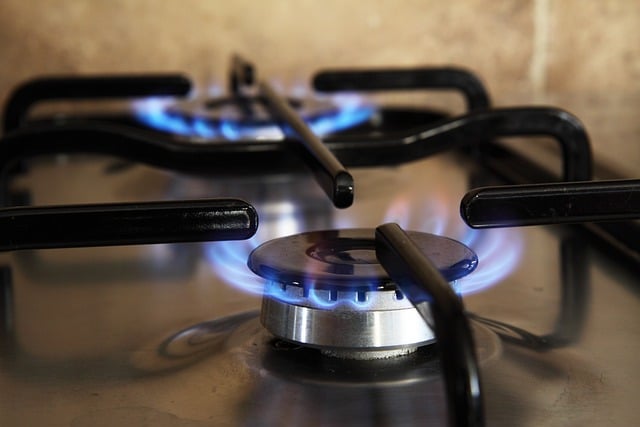Introduction – Geothermal vs Natural Gas
Many homeowners have a common question when considering geothermal heating is whether it or natural gas is better. Geothermal vs natural gas is a common argument. When it comes to heating your home, the best option is what will work best for you.
While geothermal and gas are both viable options, there are some pros and cons to consider with each of them. Very briefly, geothermal has a very high initial fixed costs but lower operating costs compared to natural gas, and then over a period of 9 years the two converge.

In terms of carbon intensity, geothermal power as a renewable energy source is far superior to natural gas. Geothermal uses the earth’s heat to generate electricity, whereas natural gas generates CO2 during burning which adds to our carbon footprint burden. This makes it a more sustainable and efficient solution for heating and cooling your home.
Geothermal systems can be more expensive initially, but that price will pay itself off, and you will always reap the rewards. Geothermal has better efficiency and lasts 35 years longer than any other system on the market today, which makes it a great choice for your family.
Cost Estimate – A Detailed Comparison
We will go through a theoretical comparison for heating costs only, because natural gas is only used for heating. You can follow this as a template.
A geothermal heat pump is used for both heating and cooling but when comparing cooling, the apt comparison is an air conditioner or a cold air heat pump.
When considering heating, we will start with a baseline understanding of the amount of heat we will need for the year. For a 1,500 sq ft home in a cold climate area like New York, the value of 20,000 kWh is a good number for the amount of heat needed.
Fixed Costs
We will assume that there’s already ductwork or existing baseboard. A geothermal system should connect fine to existing indoor ductwork or hydronic-based baseword. The remaining costs are the furnace itself.
For the natural gas system, a furnace installed in the basement and hooked up to your house is all you need. That comes down to labor and the cost of the furnace itself. We estimate this to be $12,000 total for a 7 kW / 24,000 BTU system in a 1,500 ft sq home.
For the geothermal system, a lot of yard work is needed to lay down the external piping including drilling deep into the earth. We estimate this to be $15,000 total for a 7 kW / 24,000 BTU system.
Running Costs – Using Electricity Costs From 2023
In order to reach 20,000 kWh heating per year, the natural gas system would need to burn 689 therms of natural gas because 1 therm generates 100,000 BTU which equals 29 kWh. The current price of gas varies over states and in different countries. A low value that’s common in the US is $1.90 per therm.
That comes out to $1309. The geothermal system on the other hand has an approximate efficiency of 1:4 for energy expended vs heat moved. Therefore, to move 20,000 kWh of heat, it would expend 5,000 kWh of electricity to move the heating fluid to the earth and back up.
A pretty average cost for electricity in the US is $0.15 per kWh based on 2023 prices averaged over all the states. Therefore, operating the geothermal heat pump would cost $750 per year.
Summary Of Costs – 9 Years To Recoup Higher Initial Cost Of Geothermal
| Natural Gas Furnace | Geothermal Heat Pump | |
| Fixed Cost | $10,000 | $15,000 |
| Annual Operating Cost | $1,309 | $750 |
The differential at current natural gas and electricity prices is about $559 per year. To recoup the $5,000 differential in the fixed costs, you’d have to run the system for about 9 years. Furnaces last a long time with warranties at least 10 years. So one might guess that a geothermal system could be comfortably used another 5 to 10 years after recouping the price differential. What do we think? Well, it takes a long time to recoup the losses, so the economic argument for geothermal over natural gas is not incredibly strong. But certainly, at current utility prices, geothermal comes out on top a little bit.
What Is Geothermal Energy, And How Does It Work?
Geothermal energy harnesses the natural heat of the earth to generate electricity. The earth’s core is incredibly hot, producing underground steam and hot water pockets.
Geothermal power plants tap into these pockets, bringing the steam or hot water to the surface to drive turbines and generate electricity.
This process is not only clean and renewable but also remarkably efficient. Geothermal power plants have an average capacity factor of around 92%, meaning they can generate power almost constantly.
And unlike other renewable energy sources, geothermal energy can also provide continuous baseload power, making it a reliable and stable source of electricity.
However, although the technology has been used for decades, it has unfortunately not seen widespread adoption due to limitations in geology and location.
Still, as we transition from fossil fuels towards renewable energy sources, geothermal energy will continue to play an important role in meeting our electricity needs.
How Is Natural Gas Produced, And What Are The Benefits Of Using It?
Natural gas is a fossil fuel formed through the decay and decomposition of organic material over millions of years. It is typically extracted via drilling or mining operations and then processed and purified before being used as fuel in homes and businesses.
The main benefits of using natural gas are that it is relatively inexpensive, easy to transport, highly efficient, and clean-burning. This makes it an attractive alternative to other fossil fuels like coal or oil, especially as we transition towards more sustainable energy sources like wind or solar power.
However, some challenges are associated with natural gas use, including concerns about safety and environmental impacts such as air pollution or greenhouse gas emissions. As demand for natural gas continues to grow worldwide, these challenges must be carefully considered and addressed.
Pros And Cons Of Geothermal Vs Natural Gas
If you’re looking for an energy source to heat and cool your home, several options exist. On the one hand, you could choose geothermal energy, which harnesses the naturally-occurring heat from deep below the earth’s surface. This option has several benefits, including reduced costs compared to other fossil fuels such as natural gas or oil. It is also very efficient and clean-burning, emitting less carbon dioxide and other pollutants than traditional heating systems.
However, there are also some potential downsides to using geothermal energy. For example, this type of system can be expensive to install due to the cost of drilling or mining operations required for extraction. In addition, it can have negative impacts on local ecosystems and wildlife due to the associated drilling and mining activities.
On the other hand, you could choose natural gas as your energy source. This option is generally more affordable than geothermal in terms of upfront costs, and it can be a reliable and versatile energy source widely available in many regions. However, there are also some environmental concerns with using natural gas, such as emissions of greenhouse gasses or air pollutants when it is burned for energy.
To choose the right energy source for your home, you will need to carefully consider each option’s pros and cons and consider factors like cost, availability, environmental impacts, and more. Ultimately, the best choice will depend on your specific needs and priorities as a homeowner.

Which Is Better For The Environment – Geothermal Or Natural Gas?
There is a clear cut answer to this question actually. Geothermal is a renewable energy source and has no carbon emissions whereas natural gas is a bonafide fossil fuel that generates carbon dioxide in combustion. There’s no question that geothermal is better.
The Four Biggest Factors To Choose Geothermal Or Natural Gas
At the end, we’ve come to down to three main ways to decide whether to choose one over the other.
Cost: As we discussed above, the cost differential only evens out over many years with geothermal starting off more expensive due to having a much higher installation cost. Here if you want to save money you should go with the tried-and-true, a natural gas boiler or furnace.
Off-Grid: If you’re nervous about relying on the utility companies, you’re not going to have a good time choosing between these two. Natural gas depends on the gas delivery instruction which can certainly become impaired when something goes wrong on the utility companies’ side. Geothermal is not independent of the grid either because it uses municipal electricity to move the compressor and the heating fluid. Only if you couple it to a solar panel system then would it be off-grid.
Carbon Emissions: Here the answer is clear. To be beneficial to the long term health of the planet. The geothermal system uses only 5,000 kWh of electricity to generate 20,000 kWh of heat. Those 5,000 kWh of electricity could even be generated by natural gas upstream at the utility company’s power sources. In contrast, the natural gas furnace needs to burn enough gas to generate directly 20,000 kWh of heat. The carbon emissions of the geothermal system are going to be roughly 4 times lower. We’re not guaranteeing that because the electrical grids of different places have different emission profiles. Ones that rely on coal and petroleum are dirtier than those that rely on hydro and nuclear.
Maintenance: Geothermal systems often have fewer maintenance needs than natural gas systems, in part because their critical components are protected from weather and because they don’t burn fuel, which can lead to wear and tear.
Summary
In conclusion, there are several pros and cons to consider when it comes to geothermal versus natural gas. Natural gas is generally more affordable than geothermal in terms of upfront costs. Still, it may have associated environmental concerns, such as emissions of greenhouse gases or air pollutants when burned for energy. On the one hand, geothermal energy can be a very efficient and environmentally-friendly option with reduced costs and emissions compared to traditional fossil fuels. However, this type of system can be expensive to install and may have negative impacts on local ecosystems. Ultimately it’s your choice, depending on your specific needs, priorities, and budget.
